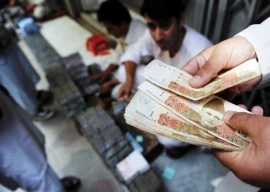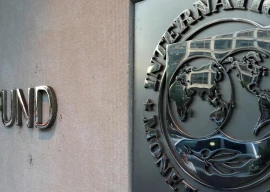
It is estimated that there are more than seven million Pakistanis living abroad, including second and third generation citizens residing in foreign countries. They have been remitting a large amount of foreign exchange through official channels, which reached an all time high of $8.9 billion in fiscal 2010.
Moreover, money sent through informal sources like ‘Hawala’ is not accounted for but is estimated to be not less than $5 billion per year.
Remittances have grown at a compound annual growth rate (CAGR) of 15.23 per cent between fiscal 1997 and fiscal 2010, while the rate between 2001 and 2009 has been 26.33 per cent. It is pertinent to note the growth rate from 2001 as events following the 9/11 attacks have forced a lot of capital to return home from abroad.
The recent announcement that Pakistan received $2.64 billion just between July and September this year is also good news. At this pace, we can expect $10.5 billion coming our way this fiscal year.
But all this money, is it being used in the most optimal manner? Probably not.
The contention is that remittances are primarily used for consumption by senders’ families, which assist them in maintaining a certain lifestyle but at the same time aid in fuelling inflation. Not many investment avenues are explored by expatriates as a very small amount is invested in capital markets while large sums are put into off-plan real estate.
In the absence of a strong capital gains tax regime, real estate provides an easy avenue to park funds but the state does not receive fiscal support through the capital invested.
Pakistan has received 38 per cent or $2.45 billion more in fiscal 2010 compared with 2008. An important reason for the same has been the depreciation of the rupee against the dollar and high interest rates being offered in the banking sector and government saving schemes.
During fiscals 2009 and 2010, the National Saving Schemes (NSSs) attracted Rs267.22 billion and Rs224.77 billion, respectively compared with Rs86.64 billion in 2008.
With investments at the Karachi Stock Exchange (KSE) lacking lustre over the past few months mainly because of operational issues, it is understandable why people would rather put their savings in high-yield fixed-income securities.
It’s also oxymoronic to see that more money is being deposited with the state even though there is a lot trumpeting of ‘trust deficit’ with the government.
Using expatriates funds for development
There is an often-repeated statement from government officials that overseas Pakistanis should play a greater role in the country’s development, while the response from the other side is the usual: “Our remittances allow the country to function.” Neither statement is completely correct.
If remittances will only be used to assist the government in managing balance of payments and budgetary deficits or in buying of plots and consumption by families back home, then we are not doing justice to anyone.
It is a sad fact that the capital markets of Pakistan are able to attract portfolio investment from foreigners but at the same time, capital from overseas Pakistanis is not making its way through.
Other than UBL Fund Managers, no local asset management company is distributing investment products abroad. Neither are there any foreign currency linked investment schemes allowing overseas Pakistanis to invest in shares of companies back home.
Some companies, while coming to the capital markets for an initial public offering (IPO), keep a small allocation for Pakistanis living abroad but the IPO market has dried up significantly this year. In such an environment it is most important to come up with products designed specifically for overseas investors.
An initiative was taken by the government in January by issuing fixed maturity National Savings Bonds for periods of 3, 5 and 10 years, respectively. The product was different than the normal NSS as only those holding CDC accounts could purchase the bonds that were tradable in the market.
The Rs3.5 billion response was lukewarm considering the funds attracted by NSSs during the year were more than Rs224 billion. The coupon offered was also better than what NSS was offering. The initiative was commendable but investors have not appreciated the same – very little trading of the bonds has taken place on the KSE.
It is very important to have a liquid capital market. Investors have to begin valuing not just equity but also debt of a company or a government.
A suggestion is that the government should raise funds from overseas Pakistanis with a clear scheme of infrastructure projects that will be developed from the funding. The funds given should be in dollars and the return on the bond in form of coupon should be linked to London Inter-Bank Offer Rate (Libor) or any other desirable benchmark.
With fixed income bonds yielding just a few points above US treasuries or Libor, Pakistan can attract funds from its Diaspora which can yield better than what an overseas Pakistani would get by investing in bonds elsewhere. For the government, the cost would be lesser than what global bond markets seek for investing in Pakistani bonds.
There are many initiatives which the state and corporations in Pakistan can take that help them satisfy the needs of capital for their growth while at the same time offer investors better returns.
If Pakistanis can trust the National Saving Schemes which in essence are nothing but borrowing by the government, then the same government should route most of its schemes through the capital markets. This will not only allow more funds in foreign currency to make their way to Pakistan but will also allow for better practices in the banking sector, where the spread between deposit and lending rates is very high.
The idea is to think out of the box and come up with solutions which are necessarily a win-win for all.
Published in The Express Tribune, November 1st, 2010.


















1716095681-0/BeFunky-collage-(1)1716095681-0-270x192.webp)















COMMENTS (3)
Comments are moderated and generally will be posted if they are on-topic and not abusive.
For more information, please see our Comments FAQ